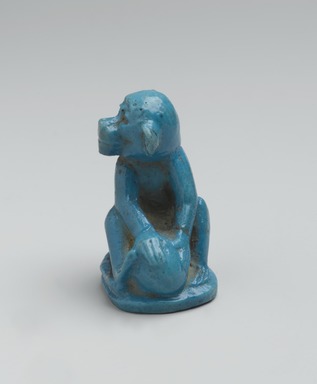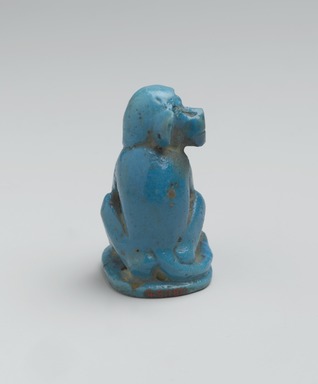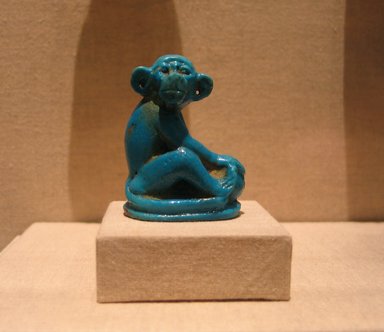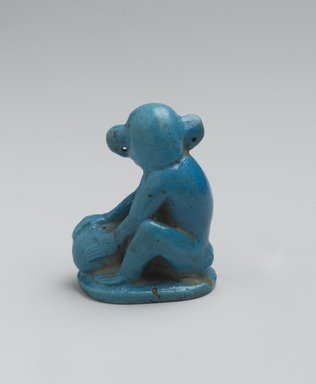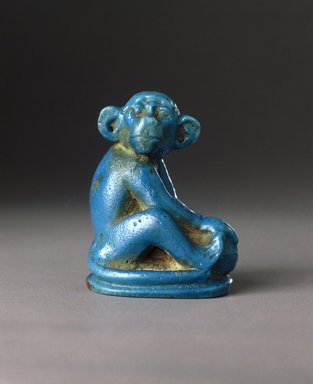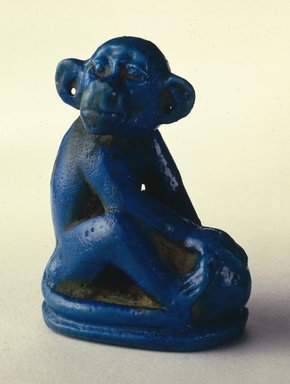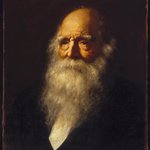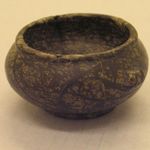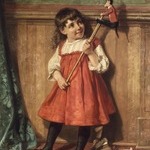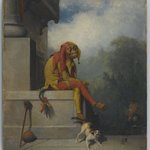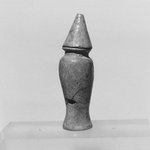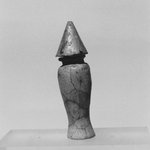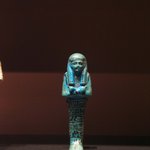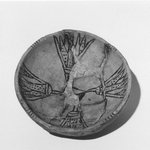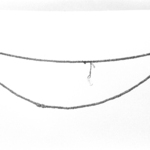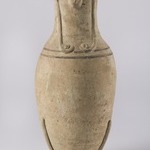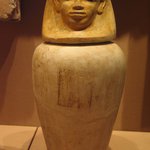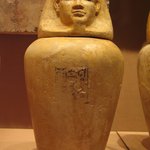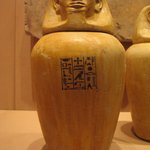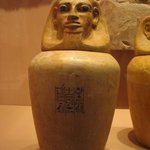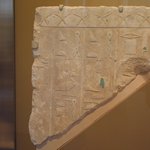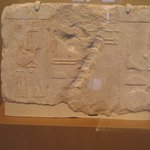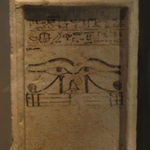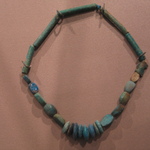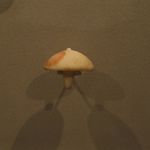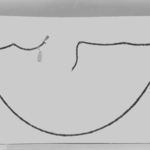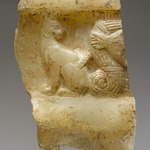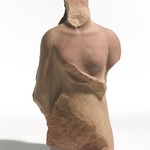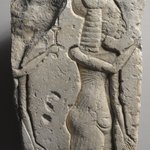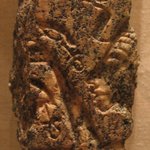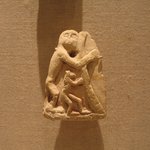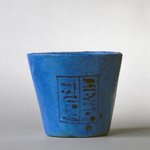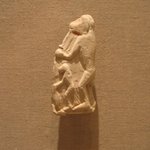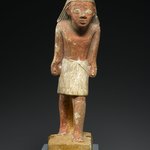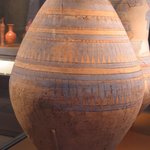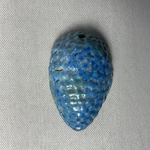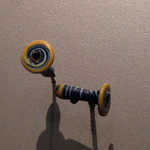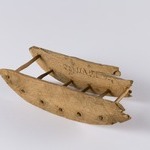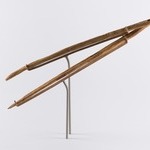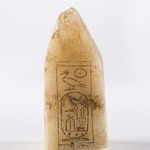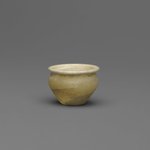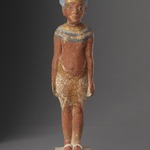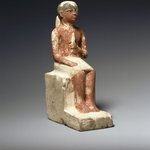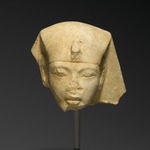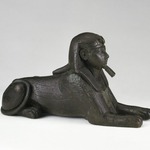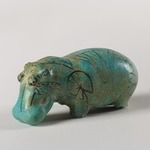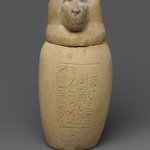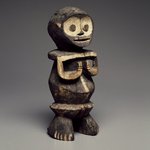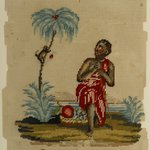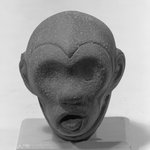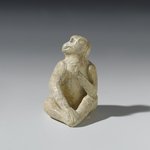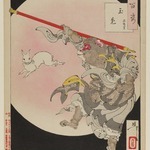Monkey
Egyptian, Classical, Ancient Near Eastern Art
Throughout Egyptian history, monkeys were enjoyed for their playful, whimsical behavior. This blue faience example holds a ball or piece of fruit. In antiquity, it wore a metal earring indicating that it represented a household pet. Because they had to be imported over great distances at considerable expense, the possession of monkeys indicated the owner’s wealth and social status.
MEDIUM
Faience
DATES
ca. 1352–1336 B.C.E.
DYNASTY
late Dynasty 18
PERIOD
New Kingdom
DIMENSIONS
2 1/8 × 1 1/8 × 1 9/16 in. (5.4 × 2.8 × 4 cm)
mount: 2 1/4 × 1 3/4 × 1 3/8 in. (5.7 × 4.4 × 3.5 cm)
(show scale)
ACCESSION NUMBER
48.181
CREDIT LINE
Charles Edwin Wilbour Fund
CATALOGUE DESCRIPTION
Blue glazed figure of monkey seated on ovoid base. Body in the round, head at right angles to shoulders, ears pierced, hands extended grasping unidentified object supported by one foot and resting on base.
Condition: Intact. Glaze slightly worn on front of body.
MUSEUM LOCATION
This item is not on view
CAPTION
Monkey, ca. 1352–1336 B.C.E. Faience, 2 1/8 × 1 1/8 × 1 9/16 in. (5.4 × 2.8 × 4 cm). Brooklyn Museum, Charles Edwin Wilbour Fund, 48.181. Creative Commons-BY (Photo: Brooklyn Museum, 48.181_PS2.jpg)
IMAGE
overall, 48.181_PS2.jpg. Brooklyn Museum photograph, 2009
"CUR" at the beginning of an image file name means that the image was created by a curatorial staff member. These study images may be digital point-and-shoot photographs, when we don\'t yet have high-quality studio photography, or they may be scans of older negatives, slides, or photographic prints, providing historical documentation of the object.
RIGHTS STATEMENT
Creative Commons-BY
You may download and use Brooklyn Museum images of this three-dimensional work in accordance with a
Creative Commons license. Fair use, as understood under the United States Copyright Act, may also apply.
Please include caption information from this page and credit the Brooklyn Museum. If you need a high resolution file, please fill out our online
application form (charges apply).
For further information about copyright, we recommend resources at the
United States Library of Congress,
Cornell University,
Copyright and Cultural Institutions: Guidelines for U.S. Libraries, Archives, and Museums, and
Copyright Watch.
For more information about the Museum's rights project, including how rights types are assigned, please see our
blog posts on copyright.
If you have any information regarding this work and rights to it, please contact
copyright@brooklynmuseum.org.
RECORD COMPLETENESS
Not every record you will find here is complete. More information is available for some works than for others, and some entries have been updated more recently. Records are frequently reviewed and revised, and
we welcome any additional information you might have.
What makes the monkey figure such a vibrant shade of teal?

The monkey is formed out of a quartz-based paste called faience which is then glazed with mineral pigments to give it that bright blue color. It was often used as a more affordable alternative to expensive materials like the blue gems turquoise and lapis lazuli. It was the mix of certain pigments with copper, exposed to very high heat, that reacted and turned such a vibrant blue. And this color signified health and life to the ancient Egyptians like the Nile River and similar to the green of vegetation!


